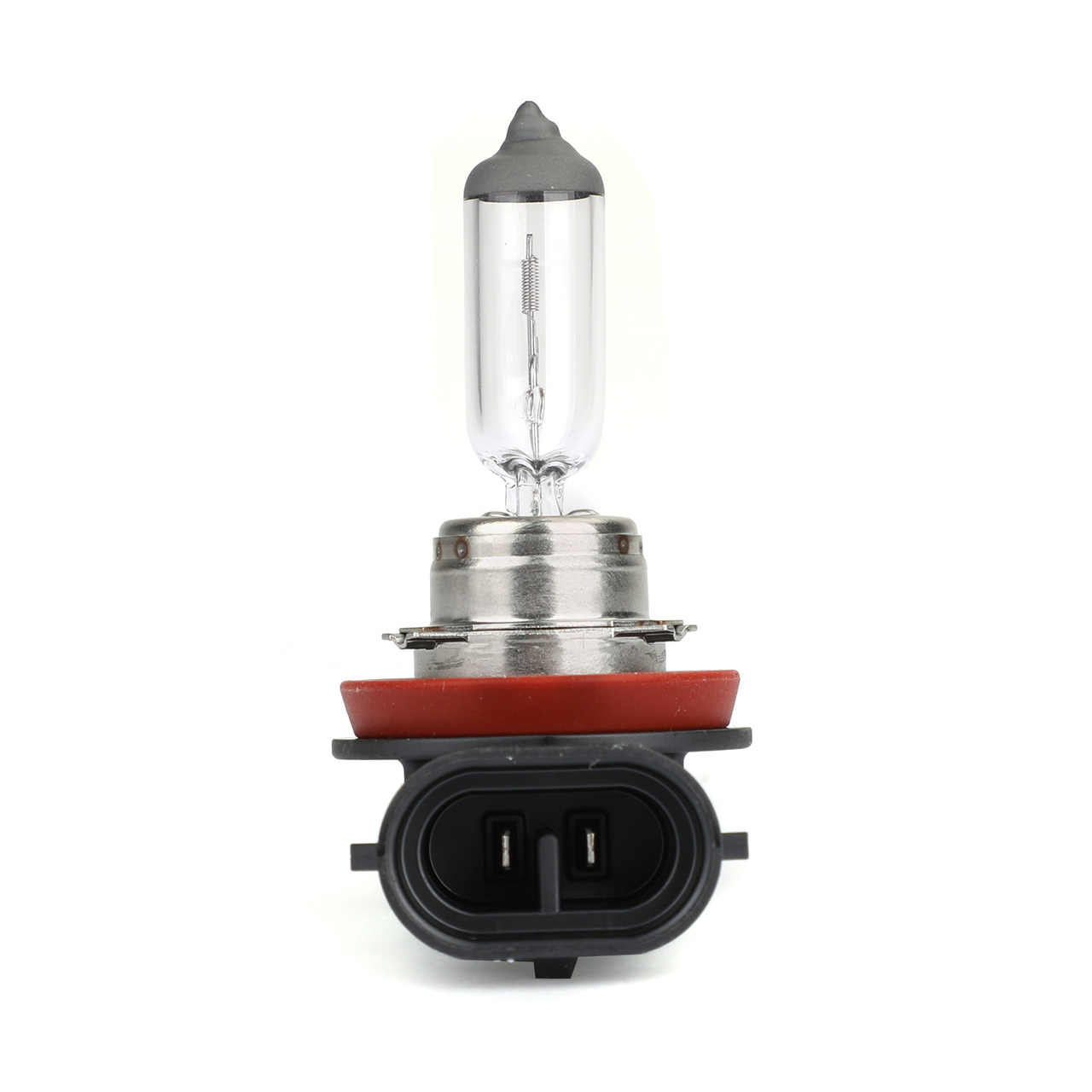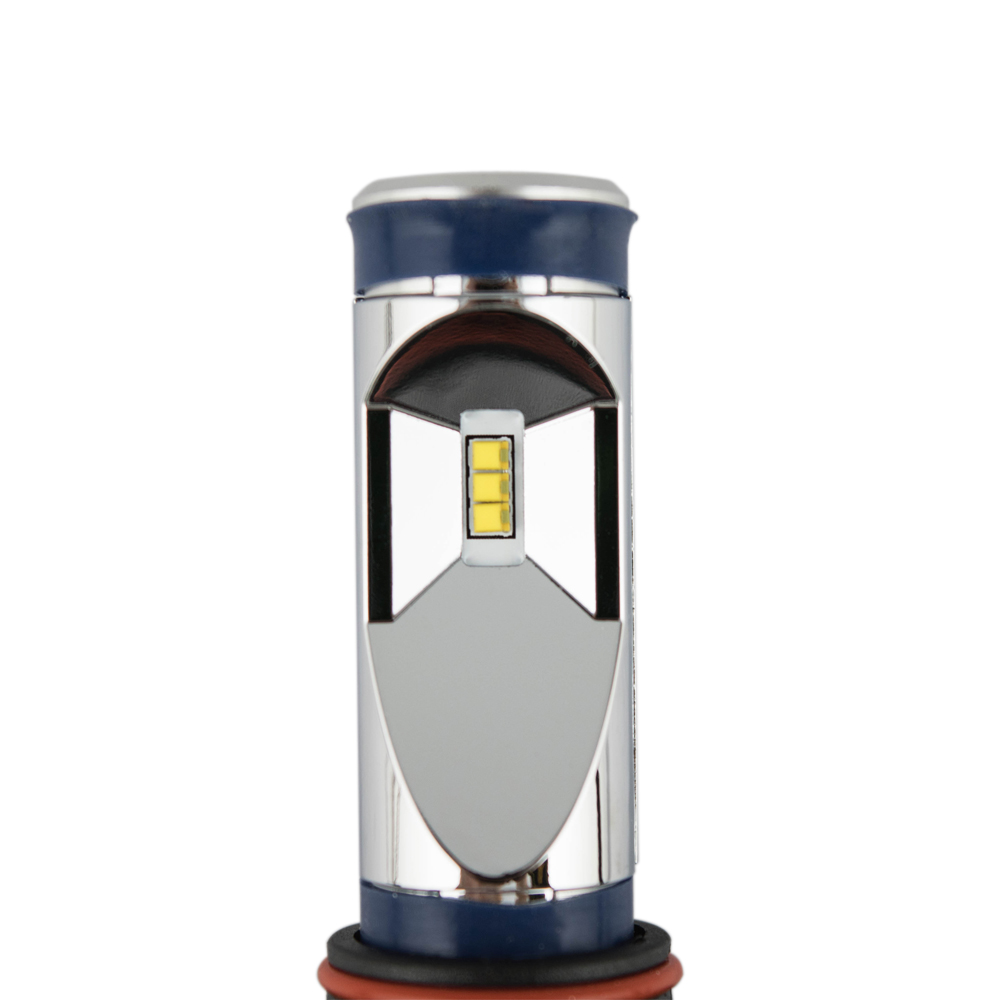Some vehicles have different types of headlamps depending on model, submodel, and manufacturer. Manufacturers currently use three main types of lights:
- Halogen
- LED
- HID/Xenon
Most headlights are manufactured with halogen lamps. However, LED and HID headlamps are recently becoming increasingly popular due to their brighter illumination and longer lifespan.
Halogen Headlamps

Halogen headlamps have a gas-filled incandescent bulb with a tungsten filament. By heating up the tungsten filament with electricity, the halogen headlamp releases a familiar warm, amber light. The lamp contains trace amounts of halogen gas such as iodine or bromine. These gases react with the filament to prevent the glass from blackening and helps the bulb stay brighter for longer. These lamps are well-liked due to their low-cost of manufacture and easiness to replace. This type of lamp is not energy efficient however, and heats up relatively quickly, resulting in have a shorter lifespan in comparison to other headlamps.
LED Headlamps

LED (light emitting diode) headlamps are known for their efficiency compared to halogen or incandescent lamps. The diodes are illuminated by an electrical current running through a microchip, which produces the visible light. To prevent overheating and burning out, LED lights often use heat sinks to absorb the heat produced by the bulb and then dissipate it into the surrounding environment. Generally, the higher the temperature LED lamps operate at, the shorter their lifespan. In comparison, incandescent bulbs require heating the filament to a high enough temperature for it to produce light, which results in most of its energy released as heat.
These lights are incredibly adaptable and work well with vehicles packaged with adaptive headlights. By combining a matrix of LEDs with sensors and cameras, the data collected by the computer can then illuminate, dim, or turn off each diode to keep the road illuminated to the maximum. On the downside, due to their complexity, some LED lamps can be incredibly expensive.
HID or Xenon headlamps do not run off a filament or microchip, but instead, as their name suggests, utilizes xenon gas as their illumination source. Similar to halogen lamps, electricity is passed through the bulb. It is the gas itself we ignite however, not any filaments. The heated gas produces a vivid and bright white-blue light three times the power of a standard halogen bulb. Much like with LED lights, along with the improved illumination, these lights have phenomenal lifespan.

On the downside, xenon lights are not cheap to come by. Your standard, OEM HID headlight for a 2007 Toyota Prius can cost over $400. Newer model Toyotas can have replacement HID headlights costing upwards of $1,000.
We definitely don't want you to rely on an old, dimming light that not only increases your chance of an accident on the highway, but replacement parts also shouldn't cost you an arm, a leg, or in the case of Toyota's $1,000 headlights, half a paycheck.
Here at Parts Nation, we aim to keep our prices low so you can get only the best for your vehicle. All of our headlights are manufactured to OEM specifications, and we offer a limited 1-year warranty on all of our products should you ever encounter any issues.
Our team of experts is always ready to help you out! Contact us today regarding a set of brand new headlights for your vehicle. We'll have you back on the road and ready to roll!


 Canadian Dollar
Canadian Dollar
 Mexican Peso
Mexican Peso



